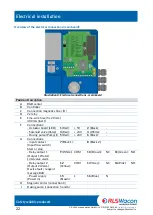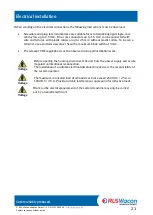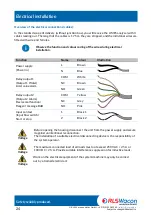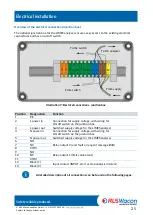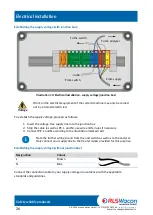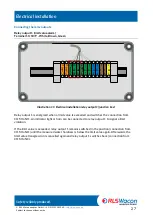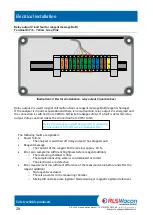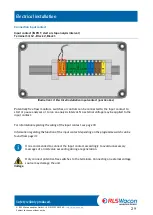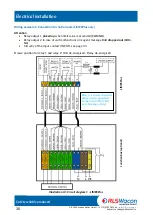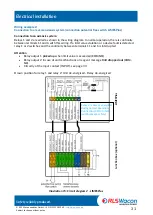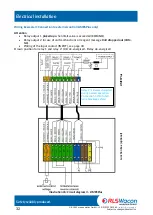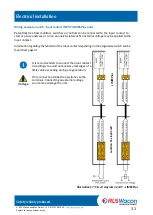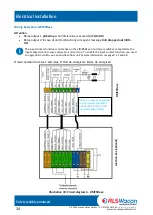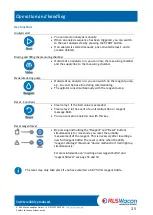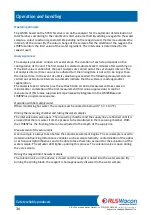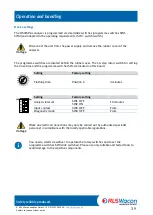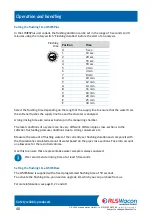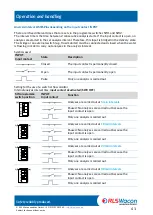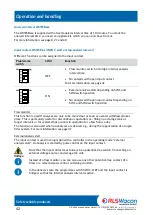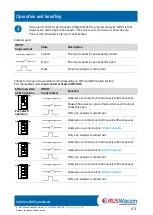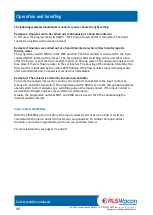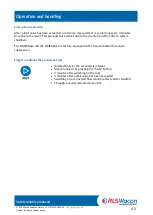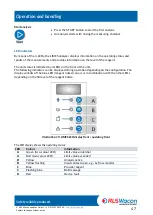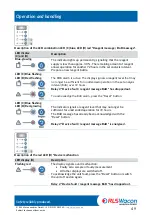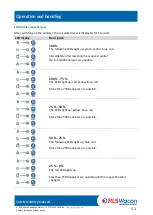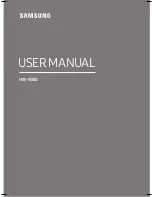
Safety reliably produced.
© RLS Wacon analytics GmbH ∙ +49 (0)5121 28126 0 ∙
Subject to
change without notice
36
Operation and handling
Operating principle
The LIMES based on the SYCON series is an online analyser for the automatic determination of
total hardness according to the colorimetric limit value method. By adding a reagent to the water
sample, a colour reaction is generated. Depending on the reagent used, the device evaluates the
intensity of the colour. By the colour change of the sample after the addition of the reagent, the
LIMES monitors the limit value of the water ingredient. The limit value is determined by the
reagent used.
Analysis process
The analysis procedure consists of several steps. The duration of each step depends on the
configuration of the unit. The first analysis is started automatically 3 minutes after switching on.
If the limit value is undershot, the next analyses are carried out at the set analysis interval. The
set analysis interval time can only be adhered to if the rinsing time is not set to be longer than
the interval time. In the event of a limit value being exceeded, the following measurements are
carried out at 8-minute intervals to promptly indicate that the system is ready again after
regeneration.
The analysis takes 3 minutes plus the set flush time. A control measurement takes place 4
minutes after completion of the first measurement (first value suppression). A control
measurement (first value suppression) is permanently integrated in the LIMESBase and
LIMESPlus programme sequence.
Operation with hot sample water
When monitoring hot water, the sample must be cooled to below 40 °C (< 104 °F).
Rinsing the measuring chamber and taking the water samples
The inlet solenoid valve opens. The measuring chamber and the supply line are flushed until it is
ensured that there is water from the process to be monitored in the measuring chamber. With
the LIMESPlus, the flushing time can be adjusted to the length of the supply line.
Measurement of the zero sample
A zero sample is always taken before the actual measurement begins. The zero sample is used to
determine influencing disturbance variables such as sample turbidity, contamination of the optics
or extraneous light influences and to be able to take them into account for the evaluation of the
water sample. The actuator LED lights up during this process. The solenoid valve is open during
the zero sample.
Dosing the reagent into the water sample
The solenoid valve on the device is closed and the reagent is dosed into the water sample. By
turning the stirring blade, the reagent is homogeneously dissolved in the water sample.
Содержание 32-074165
Страница 76: ......

